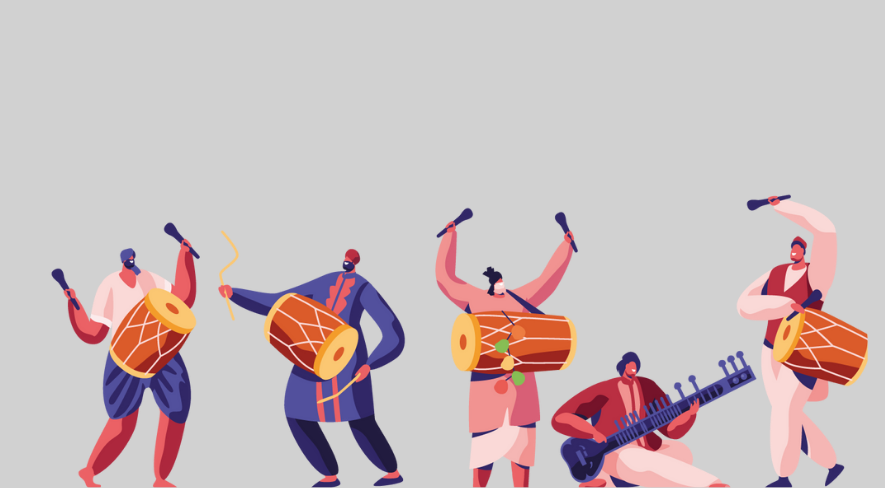- Scientists have found flutes made from mammoth ivory and bird bones from ancient caves in southern Germany. These musical instruments date back at least 43,000 years and serve as evidence of the earliest occupations of homo-sapiens.
- Various stringed instruments, such as the Ravanahatha, have been recovered from archaeological sites like the Indus Valley Civilization.
- The Indian musical traditions, like Marga Sangeet (The Path to Salvation), find references in the Vedas and other ancient Hindu scriptures.
Music has been around for tens of thousands of years. And it is believed to be one of the most primary systems of communication, along with language. Archaeological and genetic studies have proven that the twin powers of language and music have been instrumental in passing down information, skills, and ideas across and within generations.
Music, specifically, was seen as a biological human skill ever since the Darwin era. “It is probable that the progenitors of man, either the males of females or both sexes before acquiring the power of expressing mutual love in articulate speech endeavoured to charm each other with musical notes and rhythm,” he writes in The Descent of Man. Others believed that it was a technique mothers used to communicate with their newborns before they learned to talk. Moreover, up until the middle ages, music was a part of education, alongside astronomy, arithmetic, and geometry. It was not seen as a purely artistic discipline, separate from science and disconnected from the economic and work issues that dominated our existence. Rather, it was a significant part of the rubric that was used to understand and solve the problems of the world.
These foundational constructs of music remain unchanged even today. Music is an exploration of the self, a reflection of the society, and a shared experience that has evolved across millennia. It is not just an ancient paralanguage, or a thriving creative and economic pursuit, but an ordinary part of daily life.
Turning points in the sound of music
- Emulating the sounds of nature with tones and repetitions
- Combining sounds with vocals and lyrics inspired by natural surroundings
- Use of music in ceremonies and traditions having close associations with land and wildlife
- Development of musical instruments that could produce distinctive sounds
- Production of sophisticated and complex sounds with multiple instruments being played together
- Creation of songs that changed their rhythm, tempo, and lyrics depending on cultures
- Formation of indiegenous music styles and intertribal genres
- Incorporation of western influences into traditional music and extension into subgenres like classical, folk, blues, rock, etc.
- Emergence of techno and reggae music with faster pace and rhythms
- Computer-generated music, blended beatmatching, and the appearance of Disc Jockeys on the scene
- Globalisation of music and people’s exposure to traditional as well contemporary styles with the advent of the internet
- Genesis of a globally industry spurred by collaboration, innovation, and diversity
Curated and contributed by Arushi Sharma, this article originally appeared in the Music edition of The Plus magazine.

